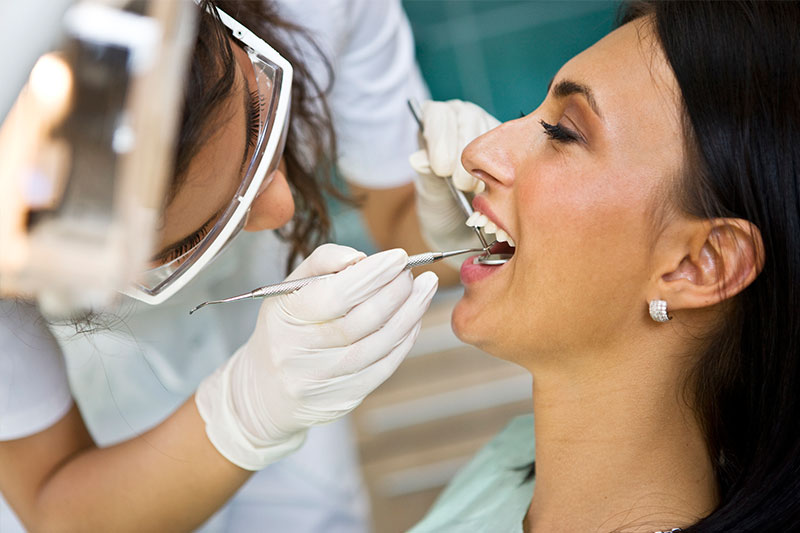Tag: dental exam near me
Cost of Dental Exam & Teeth Cleaning in Litchfield MN
Routine dental checkups and professional cleaning form a vital part of preventative oral care. These preventive visits may also include additional services, such as X-rays, fluoride application, cancer examination, and so on depending on your personal dental care needs and your last oral checkup. Combined with a proper at-home oral care routine, these visits help you maintain optimal dental health, reducing the risk of tooth loss and expensive dental procedures.
But how much can you expect to pay for these routine dental visits?
The national average costs of popular dental services such as exams and cleaning vary from one region to the other, and from dentist to dentist.
If you have a dental insurance plan, your cost of preventive care may be considerably lower, or nothing more than your monthly premium. Since dental insurance plans typically emphasise preventative care, most of them cover two annual dental checkups. That said, you should consult your dental insurance company to determine the various dental services covered by your policy, as well as the extent of the coverage.
Final note
Dental insurance can provide savings when receiving preventive care services such as routine exams, professional cleanings, sealants for children, topical fluoride, and x-rays (usually one set per year). The frequency and benefits for each service depend on the type of plan you have, so you should always read the plan details carefully. Even if your employer does not offer dental insurance as a perk, you can purchase an individual or family plan to enjoy reduced cost of most preventive and restorative dental treatments.
Tooth Infection Treatment in Litchfield MN
A tooth infection occurs when bacteria infects the inside of your tooth (pulp), resulting in a condition known as pulpitis. If not treated promptly, the infection may spread to surrounding areas of the tooth, causing pus to collect in the tooth or surrounding gum pockets. This is known as an abscess.
Tooth infections can be caused by untreated tooth injuries, decay, or previous dental work, resulting in either periapical abscess, which causes a pocket of pus to form at the tip of the tooth root, or periodontal abscess, which causes a pocket of pus forms at the side of the tooth root to form a periodontal abscess.
Symptoms of a tooth infection
While pulpitis causes tooth sensitivity, especially when consuming hot or cold foods and drinks, dental abscesses tend to be very painful, and can even affect your ability to perform basic daily activities. If left untreated, the problem will continue to get worse and destroy the bone tissue around the abscess. If you have a tooth infection, you may experience:
- Throbbing pain in the tooth that gets worse with time
- Pain in the surrounding areas, such as the ear, lower jaw, and neck on the same side as the infected tooth
- Soreness of infected tooth and surrounding area when biting
- Pain in the teeth when consuming hot or cold foods and drinks
- Bad taste in your mouth
- Fever and general feeling of being unwell
- Difficulty opening your mouth and swallowing
Treatment for tooth infections
If you suspect that you have a tooth infection, you should visit your dentist immediately for diagnosis and/or emergency treatment. If it’s not possible to see a dentist right away, your doctor may recommend some over-the-counter medication to help with the pain. Antibiotics may also be administered to stop the spread of the infection, especially if your face is swollen, have a fever, or currently managing other health problems that weaken your immune system.
Cases of dental abscess are treated by draining the pus and resolving the infection by removing the damaged tissue from the pulp. Depending on the extent of tooth damage, the tooth can be saved with root canal therapy and then capped with a dental crown to strengthen it. Alternatively, the tooth may have to be extracted and then replaced with a partial denture, bridgework, or dental implant.
Please visit your dentist for proper diagnosis and tooth infection treatment.
Tooth Infection Treatment in Litchfield MN
A tooth infection occurs when bacteria infects the inside of your tooth (pulp), resulting in a condition known as pulpitis. If not treated promptly, the infection may spread to surrounding areas of the tooth, causing pus to collect in the tooth or surrounding gum pockets. This is known as an abscess.
Tooth infections can be caused by untreated tooth injuries, decay, or previous dental work, resulting in either periapical abscess, which causes a pocket of pus to form at the tip of the tooth root, or periodontal abscess, which causes a pocket of pus forms at the side of the tooth root to form a periodontal abscess.
Symptoms of a tooth infection
While pulpitis causes tooth sensitivity, especially when consuming hot or cold foods and drinks, dental abscesses tend to be very painful, and can even affect your ability to perform basic daily activities. If left untreated, the problem will continue to get worse and destroy the bone tissue around the abscess. If you have a tooth infection, you may experience:
- Throbbing pain in the tooth that gets worse with time
- Pain in the surrounding areas, such as the ear, lower jaw, and neck on the same side as the infected tooth
- Soreness of infected tooth and surrounding area when biting
- Pain in the teeth when consuming hot or cold foods and drinks
- Bad taste in your mouth
- Fever and general feeling of being unwell
- Difficulty opening your mouth and swallowing
Treatment for tooth infections
If you suspect that you have a tooth infection, you should visit your dentist immediately for diagnosis and/or emergency treatment. If it’s not possible to see a dentist right away, your doctor may recommend some over-the-counter medication to help with the pain. Antibiotics may also be administered to stop the spread of the infection, especially if your face is swollen, have a fever, or currently managing other health problems that weaken your immune system.
Cases of dental abscess are treated by draining the pus and resolving the infection by removing the damaged tissue from the pulp. Depending on the extent of tooth damage, the tooth can be saved with root canal therapy and then capped with a dental crown to strengthen it. Alternatively, the tooth may have to be extracted and then replaced with a partial denture, bridgework, or dental implant. Please visit your dentist for proper diagnosis and tooth infection treatment.
Tooth Pain Relief Treatment in Litchfield MN
Tooth pain can be felt in or around a tooth when chewing, consuming hot or cold food or drinks, or even when at rest. Toothaches tend to occur as a result of some kind of tooth trauma or a dental condition, such as a cracked tooth, dental cavity, advanced gum disease, or an exposed tooth root. However, you may also experience tooth pain due to disorders of the jaw joint, known as the temporomandibular joint. The severity of the pain can be mild, sharp, or excruciating, and can vary in occurrence, from periodic to chronic.
Tooth pain may be caused by:
- Dental caries or cavities
- Dental abscess
- Periodontal disease
- Tooth root sensitivities
- Impacted tooth
- Temporomandibular joint (TMJ) disorders
It’s important that you visit a dentist for a thorough examination, which includes a visual examination of the tooth and dental X-rays, to diagnose the cause of the pain and recommend an appropriate long-term treatment. Keep in mind that some toothaches may be caused by a problem that doesn’t originate from a tooth or the jaw. Pain around the teeth and jaws can be a sign of diseases of the ears (such as ear infections), heart (such as heart attack or angina), and sinuses (air passages of the cheekbones). In such cases, your dentist may refer you to a doctor or specialist to diagnose medical illnesses causing the tooth pain.
Treatment for tooth pain
Depending on the diagnosis, your dentist may recommend the use of over-the-counter pain relief medication, extraction of an impacted tooth, topical fluoride application for minor tooth sensitivities, a dental filling for small and shallow cavities, or a dental crown for larger cavities. For cases that involve an injured pulp or infection, then you may require root canal therapy or extraction of the affected tooth followed by tooth replacement. Cases involving advanced gum disease may require thorough cleaning, as well as scaling and root planning, combined with improved oral hygiene practices.
Schedule a Consultation Today!
Call our dental practice today to schedule an appointment with our experienced dentists for tooth pain relief treatment. We offer affordable, reliable, and highly professional dental services. Our trusted dentists will be happy to meet with you and discuss your available dental options.
Tooth Abscess Pain Relief & Dental Treatment in Litchfield MN
Infected teeth are caused by bacteria penetrating through your tooth enamel and dentin into the pulp space to cause an abscess (pulpitis), such that pus begins to collect within. It can also occur when bacteria gets trapped in deep gum pockets. This results in a number of unpleasant symptoms, including:
- Throbbing pain in the tooth
- Pain in the surrounding areas, such as the ear, lower jaw, and neck
- Soreness of infected tooth and surrounding area when biting
- Pain in the teeth when consuming hot or cold foods and drinks
- Bad taste in your mouth
- Fever and general feeling of being unwell
- Difficulty opening your mouth and swallowing
Types of tooth abscesses
If you suspect that you have a tooth infection, it is often best to visit your dentist immediately for diagnosis and/or emergency treatment.Your dentist may discover one of two types of tooth infections:
- Periapical abscess – It is the most common type of tooth infection. It happens when bacteria enters the enamel and begins to eat away at it, reaching the pulp inside the tooth. A bacterial infection in the tooth pulp causes pus to form around the root of the tooth, enlarging it.
- Periodontal abscess – This type of abscess is the result of untreated gum disease. The infected gum tissue becomes inflamed and begins to migrate away from the tooth, creating a space that is difficult to clean. Ultimately, a pocket of pus forms at the side of the tooth root to form a periodontal abscess.
Treatment options
Dental abscesses are often treated by removing the pus and resolving the infection. Additional treatments may include:
- Over-the-counter medication to help with the pain
- Antibiotics are used to stop the spread of infections.
- Root canal therapy and then capped with a dental crown to strengthen it
- Tooth extraction and replacement with a partial denture, bridgework, or dental implant.
Please visit your dentist for proper diagnosis and treatment.
Affordable Toothache Relief & Treatment Near Me, Litchfield MN
Toothaches are usually the result of tooth trauma or a dental condition, such as a cracked tooth, dental cavity, advanced gum disease, an exposed tooth root, or disorders of the jaw joint (temporomandibular joint). Pain can be either mild, severe or somewhere in-between, and it can vary from periodic to chronic.
Causes of tooth pain
The most common cause of dental pain is tooth decay, or cavities. Cavities are holes that form in the two outer layers of a tooth (tooth enamel and dentin) when you don’t brush your teeth properly, allowing acid in the mouth to erode them. If cavities are small in size, they may not cause any pain. However, as the cavity gets larger and deeper into the inner living tooth tissue (pulp), severe pain is felt when anything cold, hot, or sweet comes in contact with it.
Other causes of tooth pain include:
- Dental abscess – a tooth with a severe pulp injury can have an especially high risk of infection.
- Periodontal disease – bone loss and formation of deep gum pockets that cause gum infection and pain
- Tooth root sensitivities
- Impacted tooth
- Temporomandibular joint (TMJ) disorders – caused by arthritis, jaw injury from impact or recent dental work, or jaw muscle fatigue from habitually clenching and grinding teeth
Treatment for tooth pain
Depending on the diagnosis, your dentist may recommend one or more of the following treatments for a toothache:
- Over-the-counter pain relief medication
- Extraction of an impacted tooth
- Topical fluoride application for minor tooth sensitivities
- Dental filling for small and shallow cavities
- Dental crown for larger cavities
- Root canal therapy for cases that involve an injured pulp or infection,
- Tooth extraction of infected tooth followed by tooth replacement
- Teeth with advanced gum disease will need a thorough cleaning, as well as scaling and root planing in addition to improved tooth care habits.
The most important step is to visit a dentist for an examination of the mouth and teeth. An appropriate treatment may be suggested from that point.
Causes of Toothaches and Possible Dental Treatments | Litchfield MN
Toothaches are usually the result of tooth trauma or a dental condition, such as a cracked tooth, dental cavity, advanced gum disease, an exposed tooth root, or disorders of the jaw joint (temporomandibular joint). The severity of the pain can be mild, sharp, or excruciating, and can vary in occurrence, from periodic to chronic.
Causes of tooth pain
The most common cause of tooth pain is dental caries. Dental cavities refer to holes that form in the two outer layers of a tooth (tooth enamel and dentin), when you don’t brush your teeth properly, allowing acid in the mouth to erode the tooth. If the cavities are small and shallow, you may not experience any pain. But as they get larger and deeper towards the inner living tooth tissue (pulp), you will start experiencing severe pain when the pulp gets irritated by bacterial toxins or liquids that are cold, hot, sour, or sweet.
Other causes of tooth pain include:
- Dental abscess – Severe pulp injury and subsequent tooth infection
- Periodontal disease – bone loss and formation of deep gum pockets that cause gum infection and pain
- Tooth root sensitivities
- Impacted tooth
- Temporomandibular joint (TMJ) disorders – caused by arthritis, jaw injury from impact or recent dental work, or jaw muscle fatigue from habitually clenching and grinding teeth
Treatment for tooth pain
Depending on the diagnosis, your dentist may recommend the following treatments for a toothache:
- Over-the-counter pain relief medication
- Extraction of an impacted tooth
- Topical fluoride application for minor tooth sensitivities
- Dental filling for small and shallow cavities
- Dental crown for larger cavities
- Root canal therapy for cases that involve an injured pulp or infection,
- Tooth extraction of infected tooth followed by tooth replacement
- Cases involving advanced gum disease may require thorough cleaning, as well as scaling and root planing, combined with improved oral hygiene practices.
It’s important that you visit a dentist for a thorough examination to diagnose the cause of the pain and recommend an appropriate long-term treatment.

New Patient Exam Xrays and Regular Cleaning $67
Includes consultation, exam, and x-rays. In the absence of periodontal disease. New Patients Only
Make Appoinment
6 Month Smiles
Six Month Smiles is a short term orthodontic treatment that involves wearing clear braces to straighten and improve tooth alignment. This alternative treatment is a convenient approach to a straighter smile without the time commitment.
Learn more







